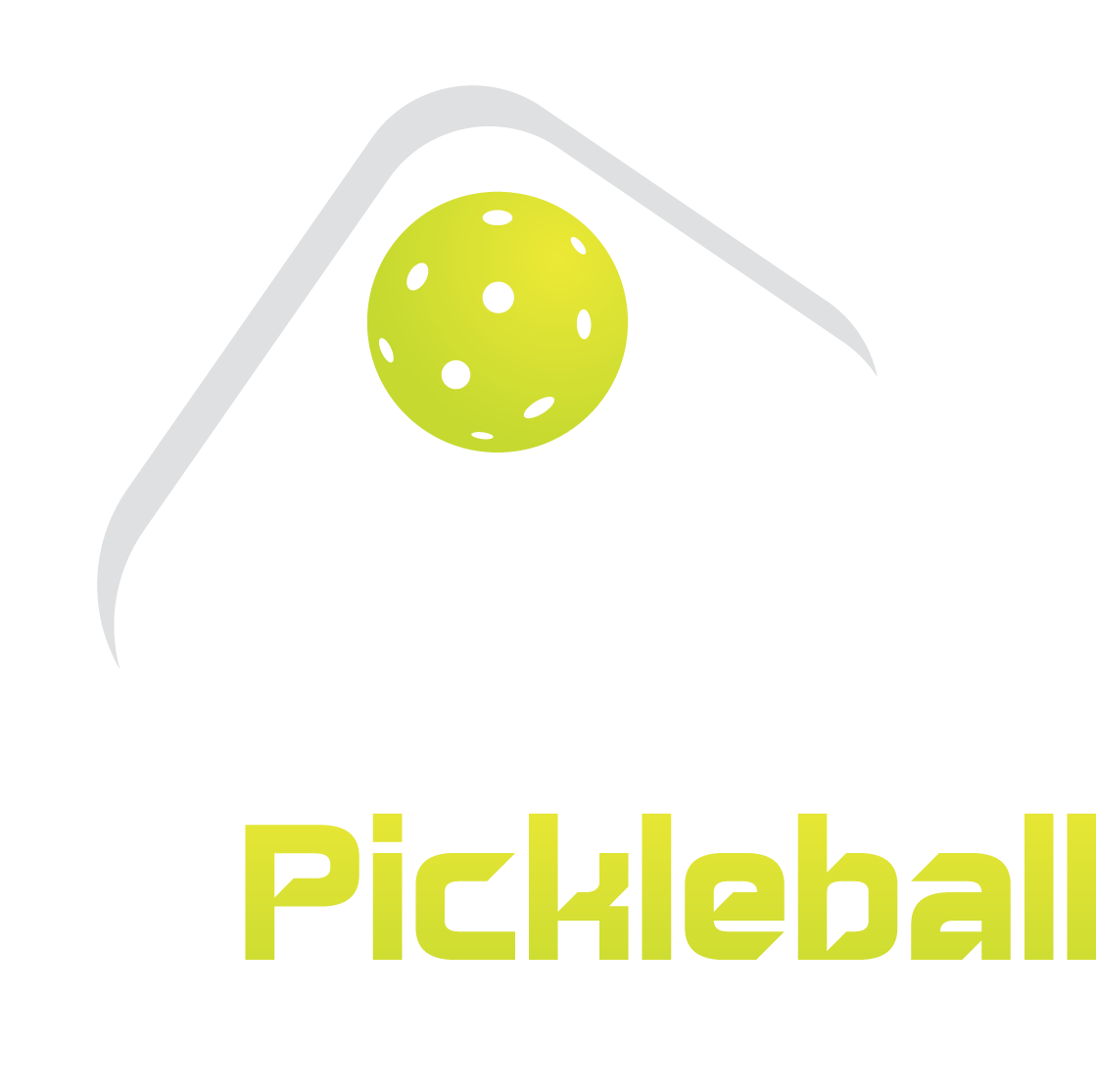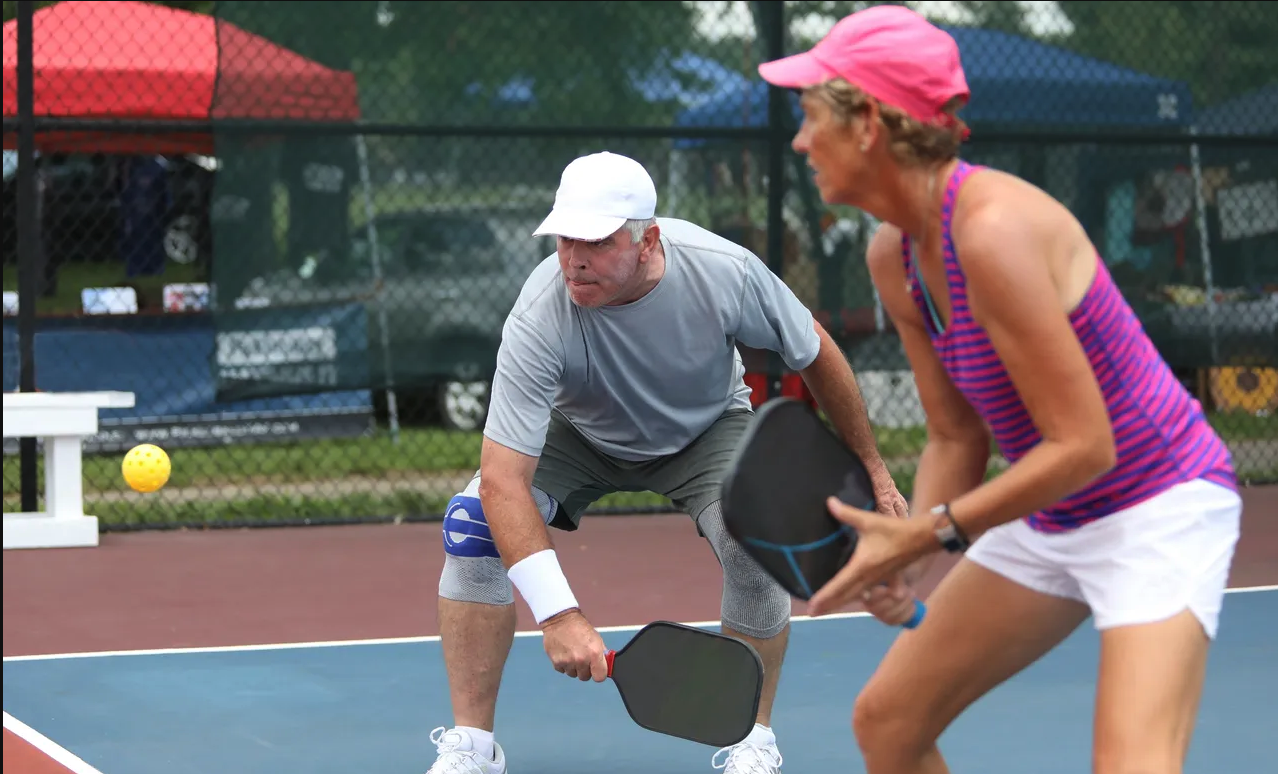Pickleball is the real 'dill'
Betsy calls it out, “Zero zero two,” and so begins the pickleball match. She and Jerry are playing doubles against Caitlin and Zack. Despite the decades of age difference between the two teams, its anyone’s guess who will come out ahead.
And that, folks, is the beauty of pickleball.
Pickleball got its start on Bainbridge Island off the coast of Seattle in 1965 when three dads got together and created a game to entertain their families. A combination of tennis, table tennis (aka ping-pong) and badminton, pickleball is a game that takes very little athletic ability to play, but one that can also be played at a highly athletic level.
For those of you who have never heard of pickleball or who are just getting started, here's a quick overview ...
The game is played on a court one-fourth the size of a tennis court with a net that is 2 inches lower than in tennis. The players use a solid paddle roughly the size of a racquetball racket. The hollow ball is slightly larger than a baseball and has between 26 and 40 holes. The game is typically played as a doubles contest, but singles matches are played as well.
The point starts with an underhand serve delivered from below the waist and hit diagonally across the court. The receiving team must allow the ball to bounce before returning it. After the initial return, the serving team must allow the ball to bounce on their side of the net prior to striking the ball. After that first return, players may hit the ball without it first bouncing— with one very important caveat: Stay out of the kitchen.
The kitchen or non-volley zone (NVZ) is the pickleball's great equalizer. In the NVZ, which extends 7 feet from the net, no player is permitted to hit a volley in which any part of the swing—from the initial setup to the follow-through. This has the effect of making each point last longer and adds a level of strategy to the game. A typical pickleball point includes a series of short shots keeping the ball in the kitchen. These deftly maneuvered shots called "dinks" continue until one side or the other is able to capitalize and bang the ball (translation: hit it as hard as you can) back across the net for what is, hopefully, a winning shot.
Prior to each point, the score of is called out by the server, as follows: the servings team’s score, the receiving team’s score and which person on the team is actually serving (ex. 002). A player serves until their team makes a fault, then their partner will serve likewise until the team makes a fault. The serving team alternates sides of the centerline after each point scored, while the receiving team holds their positions. After both people on one team have served, the opposing team will serve. Most games are played to eleven, win by two points, with only the serving team scoring.
NOTE: If your head is spinning at this point, don't worry. Most people new to the game find the scoring the most difficult thing to learn about pickleball. (When you're ready, you can learn more at USA Pickleball.)
Each game to 11 lasts around 15 minutes. In a recreational setting, either all four players will come off the court and make way for another four, depending on how many players are waiting to play and the way the park organizers run things. Sometimes the winning team stays on to play the next waiting team. Other times the winning team will split up and mix in with the next two waiting.
There are numerous places to learn about the game around Jacksonville (check our "Where to Play" page for the rundown), but for beginners, there's no place like Jarboe Park in Atlantic Beach. Ask anyone who learned how to play pickleball in Jacksonville where they learned, and there's a very good chance they will say Jarboe Park—with Verna Griffin. Every Saturday morning, Verna and her pickleball ambassadors are there to play and preach the gospel of pickleball. I speak from experience when I say the regulars at Jarboe are the most welcoming and accommodating players anywhere.
As for me, I grew up playing a lot of basketball. Some of my favorite days were spent playing pick-up games at the park with people I knew only through a love of a game and the competition and camaraderie it provided. Now at 53 years of age, my basketball days are long since done, but my love of competing on a court with a group of likeminded individuals never left me. Pickleball has rekindled that craving as intensely as ever for me. Some might even call me a pickleball addict. And believe me when I say I'm not alone, which is why #pickleballaddict is one of the most pickleball-related hashtags on social media.
One final thing you need to know about pickleball is players LOVE to talk about pickleball. Maybe it’s about the merits of the different brands of balls or the latest paddle on the market. It could be about how fast their shoes wear out (playing twice a day, seven days a week will do that). Or maybe its reliving the Erne or ATP they had last week (we even have our own language, as you’ll learn). Plus, the social aspects of playing fulfill our human need for social interaction, which has become increasingly more difficult in these times of COVID-19.
If you ask me, pickleball is a nearly-perfect social—but socially-distanced—activity.
Zack manages to get a paddle on a ball that Jerry hits low and to his backhand, but it sails ever so slightly over the net and past the kitchen that Betsy senses her opportunity and pounces. She places her return neatly down the middle of the court where neither Zack nor Caitlin can get to the ball and ending the match at 11-9. All four players approach the net and lightly tap paddles in a sign of good sportsmanship and mutual respect. Jerry yells out, “Court open,” but the next four are already on their way chomping at the bit to start their own game.



